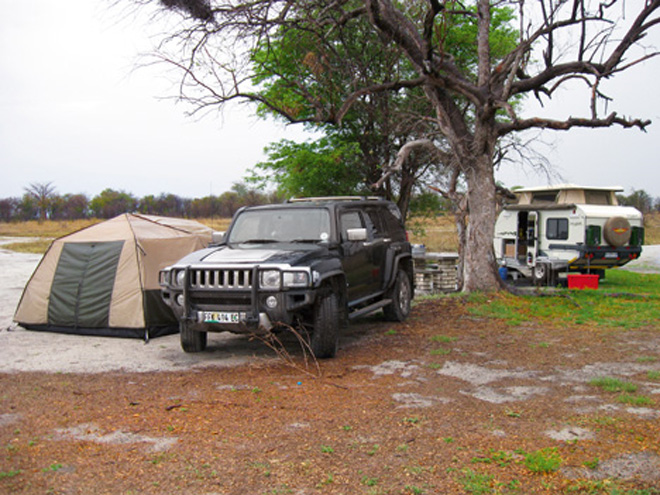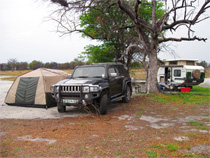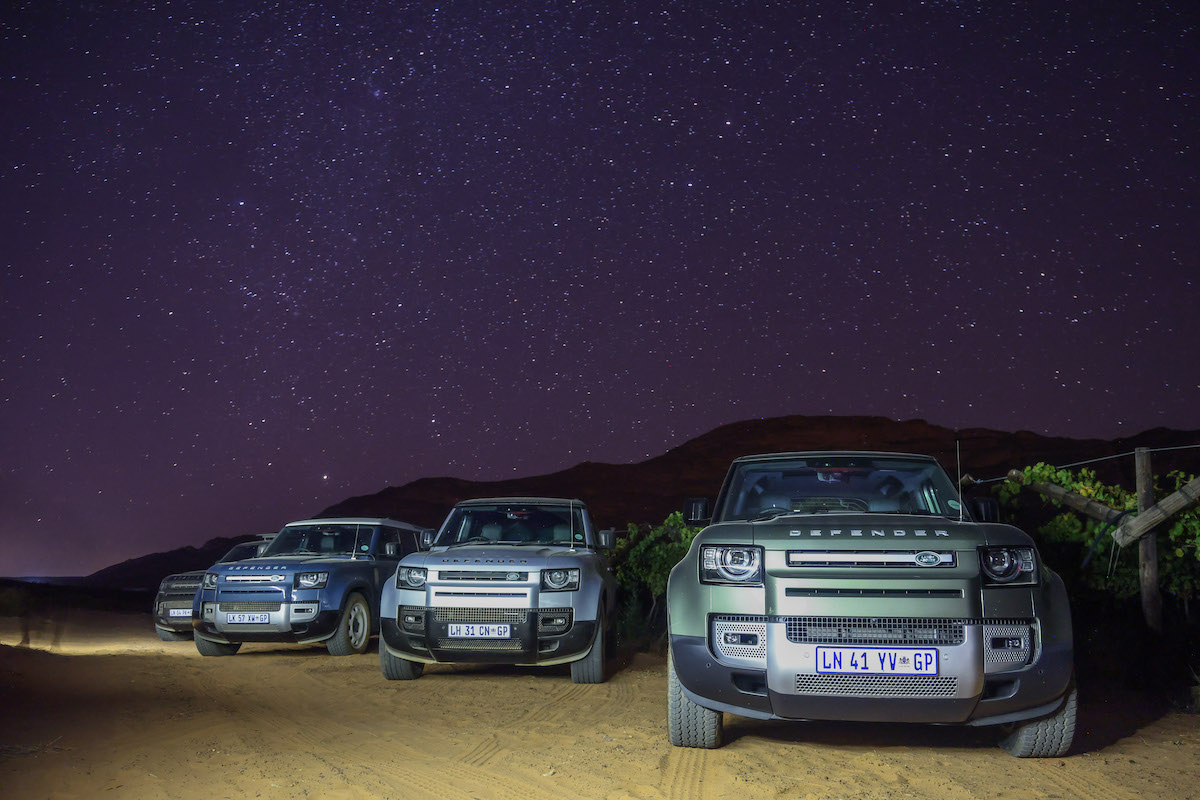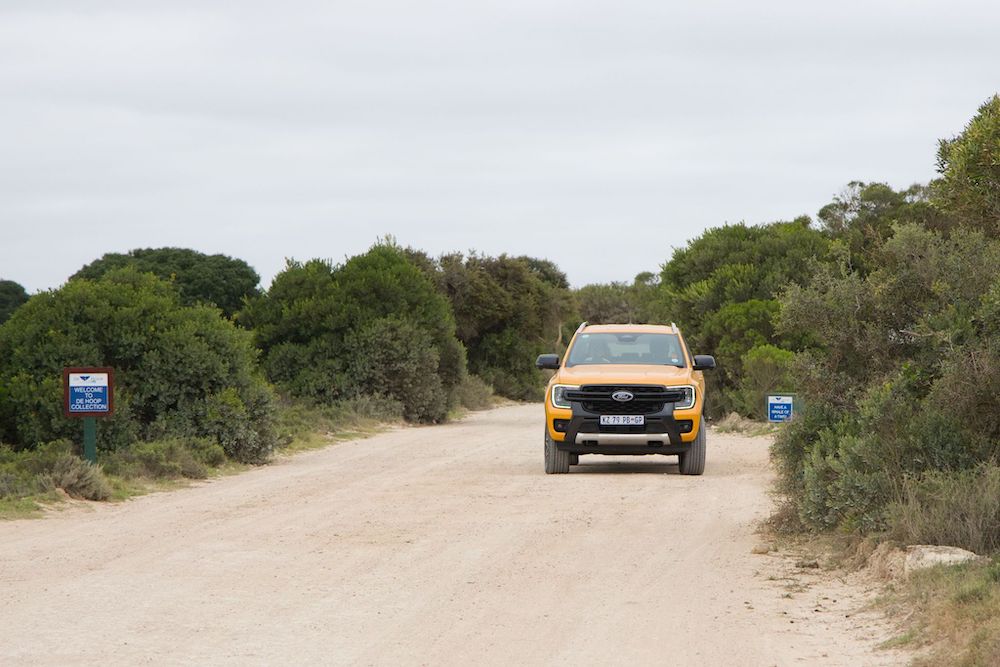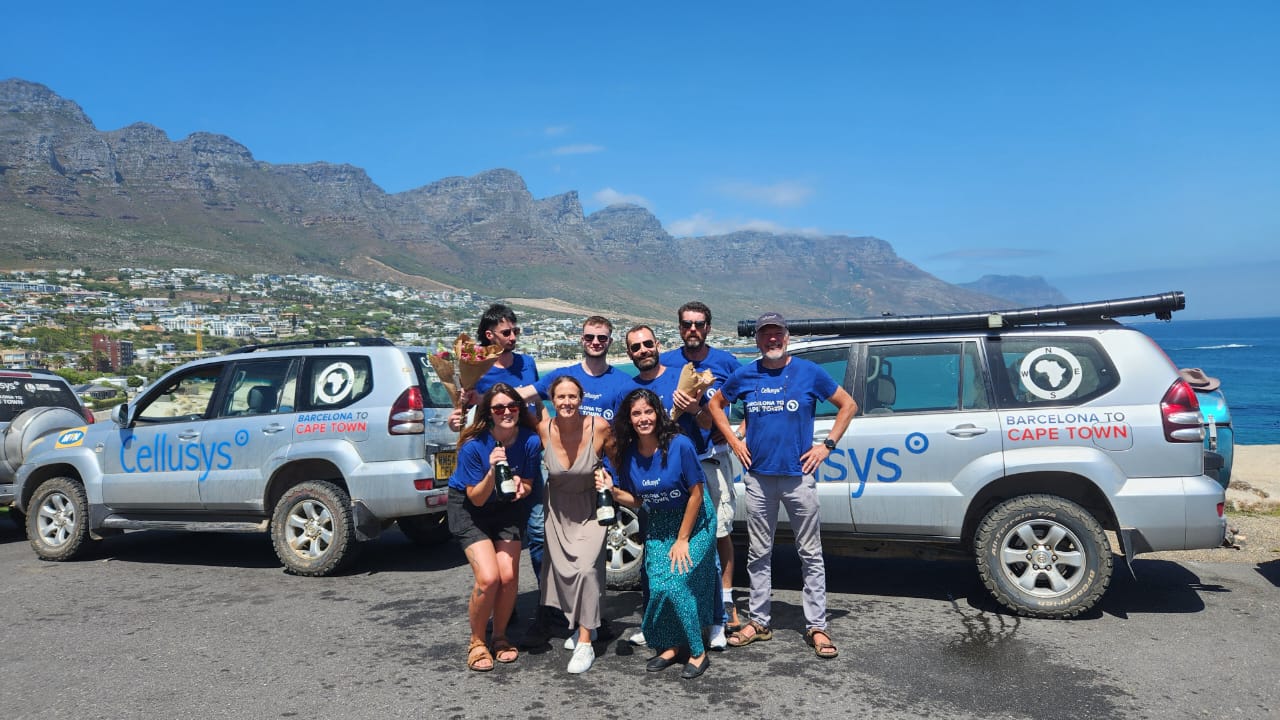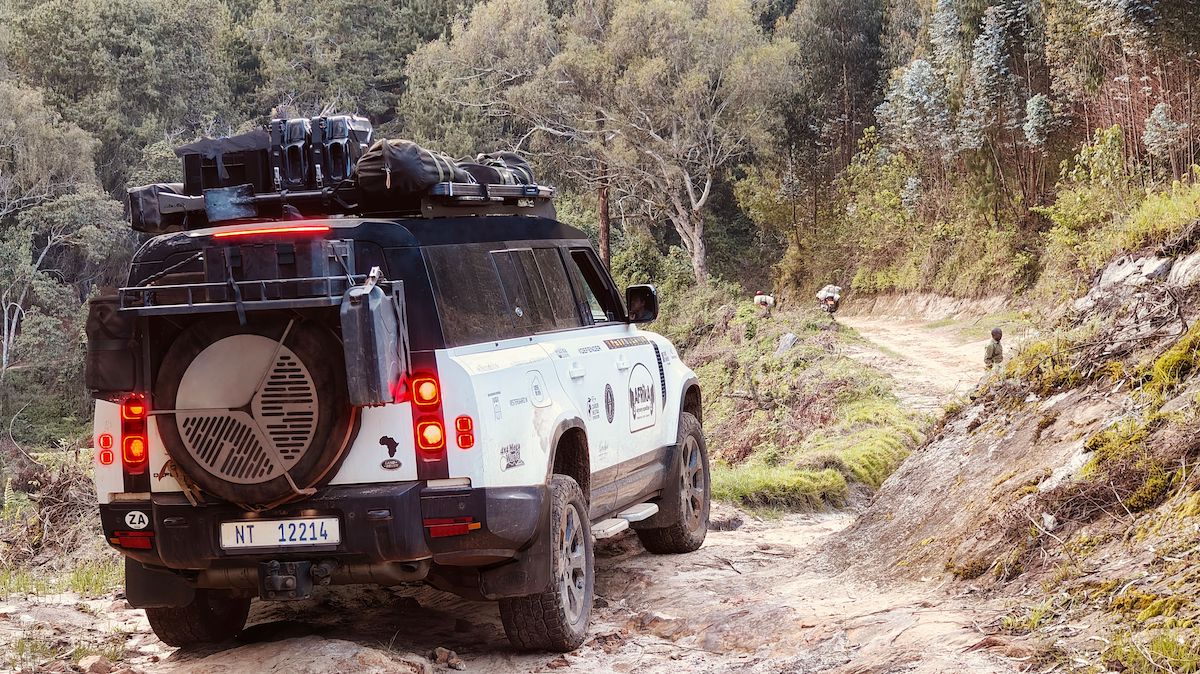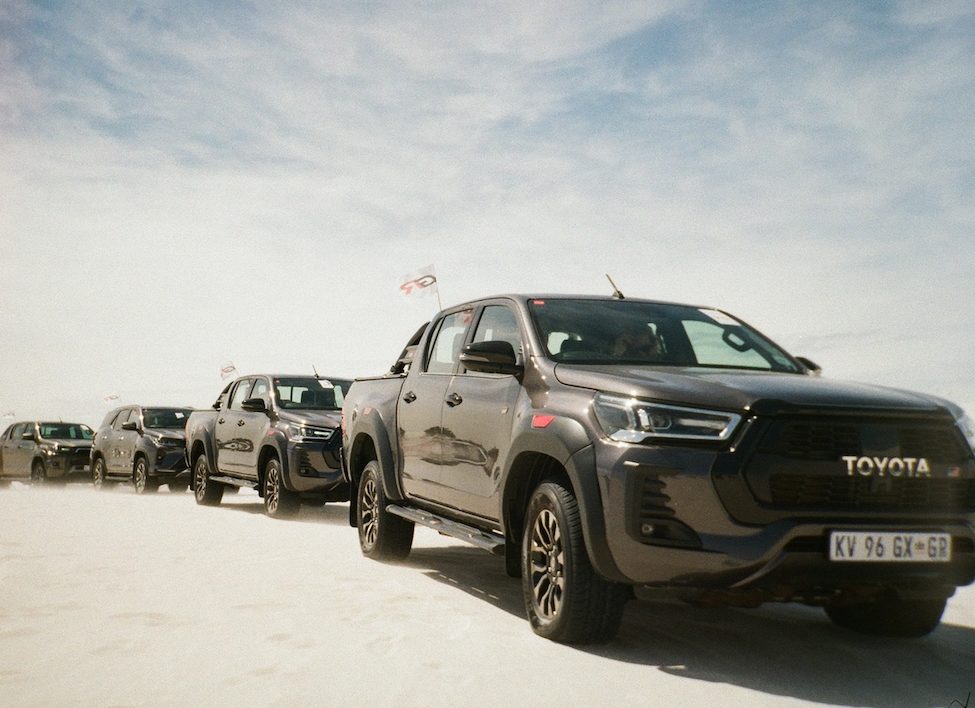Text: Eddie Botha
Photographs: Eddie Botha, Kaz Campbell, Farzad Alinejad
As a landscape architect I deal with plants and trees on a daily basis, and I love the green stuff. And according to hardened bunny huggers, Hummer and green don’t go in the same sentence. And if that Hummer is the 224 kW V8-powered H3, the two words are not supposed to end up in the same book.
But there we were, armed with a Hummer V8 and a Jurgens Safari Xplorer. Our hardened activist friends would shout that we were about to contribute more than our fair share towards the greenhouse gas effect.
But would we really? Sitting in the plush leather cabin, high off the ground, feeling rather safe and snug, the Hummer seemed kind of okay. Ish. With its relatively modern V8 engine it surely does less environmental damage than the fleets of smoking minibus taxis and trucks on our roads?
We left Pretoria late on a Monday morning, with one heavily-loaded Xplorer hooked up behind the big and eye-catching lump of a Hummer. Joining us on this adventure was South African photographer Kaz Campbell, who lives in Malaysia. Her Iranian friend and professional photographer Farzad Alinejad (Ali for short) also came along on his first-ever camping and overlanding trip.
On the N1 highway past Pretoria, heading north, the Hummer was? surprisingly smooth. The cabin was quiet, and the sound system outstanding. The four-speed automatic gearbox did get uneasy when we pushed past the 110 km/h mark, however, hunting between the third and fourth cogs, so we kept the speed below 110 km/h.
But even at our very sedate pace, the fuel-gauge needle started its downward spiral as we drove past Pretoria North. Oh bother. This excursion was going to hurt our pockets, never mind the ozone layer.
We would not reach Botswana on this first leg though. Due to our late start, and our sedate cruising speed, we decided to call it a day when we reached Lephalale (formerly Ellisras) at 4:30pm. There we checked into the Molalatau Lodge’s camping site.
It was time to explore the Xplorer. Ali was amazed as we rigged the Jurgens Safari caravan. Electrical supply, big fridge, pull-out kitchen, sleeping space for four people, a roof that lifts up? unheard of camping luxury in his native Iran.
That night we continued Ali’s African induction with a traditional braai, washed down with a few ice-cold Windhoeks.
We were so ready for the real Africa.
Driving Miss Daisy. Very far.
Our next leg would take us 855km to the Kaziikini Community Camp site, situated about 65km north of Maun.
But first we had to cross the border into Botswana. We aimed the Hummer and Xplorer towards the Stockpoort border post, reputed to be a no-nonsense and no-waiting crossing.
Stockpoort lived up to its reputation and the entire crossing was dispatched inside five minutes. Our adventure had now progressed from a plan to a more tangible reality.
Our first impression of Botswana was that its people are unbelievably friendly! On the road pedestrians waved and whistled, and as soon as we stopped somewhere, a crowd of people formed. It was soon clear why they were so friendly though.
It’s called Hummer.
People, young and old, simply adore it. They love the chunky, square looks. They love the sound of the big V8. They love the luxurious interior. And they don’t seem to care a hoot about exhaust gas emissions.
We felt like celebrities, with our adoring fans clamouring for our attention. Or, realistically, to have a better look at the Hummer. But it sure made for a welcome change to our very “normal” lives!
Meanwhile we pushed on regardless, keeping a wary eye on the fuel gauge. That gauge would play a leading role in our adventure in the days to come. And checking for the availability of fuel on the road would be one of the main discussion points in the Hummer’s cabin as we headed north towards Maun and Moremi.
We finally arrived at Kaziikini at 9pm, after covering the last 200km in darkness. This is not something we would recommend anyone doing. Donkeys, cattle, potholes and other vehicles suddenly appear in the road when you least expect it. It’s a risky business.
After a long day in the saddle we had a light dinner, and four tired “celebrities” took to the Xplorer’s comfy beds.
She’s closed, this place
We have made a habit of relying on local people’s input on travelling tips, available amenities and so on. After all, no-one knows the area better than the people living there. So, after a lazy start, we enquired at the Kaziikini Community camp reception about permits for Moremi Game Reserve.
Unfortunately the lady working at the reception on this particular day couldn’t be bothered with us. We eventually found out that since it was Botswana’s independence day, no Moremi permits would be issued for the next two days!
In a state of despair we set off for Maun to buy supplies, and hopefully to find some light at the end of the tunnel. And did that light arrive with a bang, even though we had to search a bit to find it! The Moremi Game Reserve offices were open, and we bought our permits for the next day.
With the required papers in hand we had time to kill. We heard of a cultural village called Sankuyo Village, situated close to our camping site.
Arriving there, we were greeted by a community in celebration mode, courtesy of the independence day festivities. Now if we had arrived on the scene in a Toyota Tazz we probably would have received a friendly, but lukewarm reception. But when the Hummer rolled in there, we were the flavour of the moment. We danced with our new friends, and took a lot of photos.
It was a good place to be, on that day.
Back at Kaziikini, with the Xplorer fully rigged with its awning, hot water supply and all, and with a potjie on the boil and a cold beer in hand, we relaxed. And then relaxed some more. The next day we would tackle the famous Moremi.
Here kitty-kitty
The Hummer arrived at the Moremi Game Reserve’s south gate at 6am – and so began the most stunning game-viewing day of our lives.
We spotted just about everything that can be spotted. The only animals that eluded us were leopard, rhino and buffalo. Okay, we did see a buffalo that had been on a lion pride’s breakfast menu, but we didn’t think that dead animals counted.
The best sighting of the day was when we came across two male lions, right next to the track, that seemed unimpressed by the Hummer’s star quality. For Malaysian-residents Kaz and Ali this was an amazing experience. Later, we also had a very rare sighting of an albino lechwe.
Another very memorable experience was a mokoro ride on the waters of the Okavango Delta, which were said to be at their highest level in 65 years. It was an hour-long ride, with the informative guides divulging lots of useful information.
At one stage we were within 15 metres of three elephants. Amazing stuff.
Back on the road and on the way out of the reserve we came across a lot of mud pools. In the Hummer, we hardly took any notice of them. This big lump of metal proved imperious in these conditions.
What a day!
Is it a bird? No! It’s a pan!
Our next port of call was Nata Bird Sanctuary, another community-based project. With the Hummer and Xplorer up and galloping we soon reached Nata and decided to make a lunch stop near a lake and a small town.
Within moments 15 children and two donkeys joined us. Kaz and Ali resembled Japanese tourists as they snapped away with their cameras.
As usual we filled up at Nata. Up to that stage the V8 engine had drunk 477-litres of petrol. We didn’t calculate the cost in case it ruined our holiday. At least fuel is cheaper in Botswana, at around R6.40 per litre. And South Africa supplies Botswana with petrol. Huh? At the sanctuary we found our camping spot. The place is very flat and the pan resembled an inland lake rather than a pan. There was a lot of water around, but not a lot of birds.
Jen and I decided to put up what was soon termed “the honeymoon suite”(Greensport Turbo Compact 250 tent). Sleeping in the comfortable Xplorer was great, but sometimes a newly married couple like
ourselves, well, we just needed a bit of time on our own.
That evening our braai was interrupted by a massive thunderstorm. Over many camping trips we have come to recognise a pattern: whenever we put up a tent it comes bucketing down.
In the safe and dry Xplorer, we decided to one day take a tent to a drought-stricken area, pitch it there – and bring that land rain.
Sebastien Loeb, anyone?
World rally champion Sebastien Loeb, driving towards the Nata river mouth area, would have been in his element. Here the black cotton soil, saturated from the rain, proved extremely slippery. Just driving in a straight line was a challenge in places, and at times the big Hummer turned nearly 90 degrees on its axis – while still going forward on the “road”. And this was at low speed. But the Hummer, sporting a new coat of grey-brown mud, never faltered.
Later, after our sight-seeing and picture-taking excursion, we hooked up the Xplorer and headed south again, to the Khama Rhino Sanctuary near Serowe.
On this section we earned a speeding fine for doing 95 km/h in an 80 km/h zone. Our captor clearly knew his stuff: he was positioned just before the 120 km/h zone, and where the road starts to open up. The officer briefly flirted with the idea of a bribe, but when we insisted on a receipt he reverted back to the original 400 Pula penalty.
We arrived at Khama at 6pm and set-up camp, including the honeymoon suite.
Later that evening, as expected, the rain came again.
Is that a rhino’s… tail?
Rhinos, here we come! We were up early to go in search of the sanctuary’s 32 white and eight black rhinos. After four hours, we had seen lots animals, birds, trees, grass and a few 4x4s too? but not a single rhino! Word was that, because of all the rain, the big animals had retreated into thicker bushes, away from the game-viewing routes.
Oh wait! We did at one time see what could have been a rhino’s tail, behind a thick bush. But to this day we’re not certain if that “tail” was in fact attached to a rhino.
But it was time to head back South Africa’s way and after a hassle-free border crossing at Stockpoort, followed up by a beautiful sunset near Marken, we arrived home later that evening.
Being proudly African
This trip was the highlight of our two-year sojourn back in Africa, after years living abroad. Botswana is the most “African” experience we have had in our travels and it is our favourite, by far.
And the Hummer? The overall consumption worked out at 19,7 litres/100km, with that Xplorer in tow. This was not as bad as expected, and compares rather favourably with many other petrol-powered 4×4 vehicles powerful enough to tow the luxurious Jurgens Safari caravan. Add the “celebrity” status of the H3, its comfort and its unquestionable off-roading prowess, and we must admit? it’s actually quite all right! And it emits no more gasses than any other V8 vehicle on the road either.
This adventure again reminded me why Africa is such a wonderfully diverse and beautiful place. Even though we’re off to new frontiers again, I will always remain proudly African and will miss the continent dearly in years to come.
CAMP KIT
Hummer H3 V8 Adventure
Trip odo: 3024km
Average fuel consumption: 19,7 litres/100km
On-road impression: Very comfortable, but the gearbox could do with one or two more cogs, and could be smoother. The V8 engine was a highlight, as were the standard sound system and cruise control. Rear seats proved slippery though, and not as comfortable as they looked.
Off-road impression: With all that grunt, permanent 4×4 offering lots of traction, and the standard driving aids, we never thought we were going to have to recover the vehicle. Really impressive, especially in the mud, and inspired lots of confidence. We never touched the low-range selection button, because we never came close to needing it.
Power: 224 kW @ 5200 r/min
Torque: 434 Nm @ 4000 r/min
Gearbox: Four-speed automatic, with transfer case
Ground clearance:
Price: R541 886 (includes a three-year/60 000km service plan)
More information: www.hummer.co.za
Jurgens Safari Xplorer
On-road impression: Weighing in at around 1,5-ton for this trip, one could have expected the Xplorer to throw its weight around a bit. But it tracked true and straight.
Off-road impression: The Xplorer did not mind dirt roads and potholes in the least. Again, it tracked true and straight, and not once did we get the feeling that she would fall apart if we didn’t slow down. With the heavy Hummer leading the way the Xplorer just sailed along.
Equipment: 80-litre slide-out fridge, two-burner gas stove, pull-out shower (with hot water), two double beds (sleeps four), built-in 80-litre water tank and side rally awning.
Tare: 1296kg
Gross vehicle mass (GVM): 1650kg
Ground clearance: 307mm
Price: R214 650
More information: www.jurgenssafari.co.za
Engel Combi 80-litre fridge/freezer
Overall impression: the big fridge/freezer, mounted in the Hummer’s cargo area and effectively taking up all the space, initially left us cold. All our packing space was gone! But once on the road, it made so much sense. Our food stuffs and drinks were always chilled to perfection. We loved it.
Features: Digital cabinet temperature read-out, 12V or 220V, steel cabinet, steel lid and steel handles.
Price: R
More information: www.4x4megaworld.co.za
Oztent
Overall impression: this spacious tent, which we dubbed the honeymoon tent, proved a great addition to the adventure. Not only was it spacious, with its own awning, but in the consistent rain not a single drop got through the canvas.
Size: 2,4m by 2,4m, and 1,9m high
Weight: 19kg
Sleeps: 4-5 people
Price: R?
More information: www.4x4megaworld.co.za
TRAVEL GUIDE
Molalatau Lodge, Lephalale:
Situated where the Mogul and Rietspruit rivers meet, this lush, green-lawned campsite has electrical supply for each camping spot. The pool, bar and good amenities are as good as one would expect, without being great. The camping area was well-filled by contractors working in the area.
Cost: R100 per person per night
Bad: Many contractors (and not holidaymakers) around
Good: Green grass
Contact: Tel: 014 763-3685
Kaziikini Community Campsite, near Maun:
Rustic camping with clearings between bushes, and wild animals around. Amenities are limited to toilet and warm water (depending on solar power). Community managed project next to Moremi Game Reserve.
Cost: 65 Pula per person per night (about R75).
Bad: Reception staff
Good: Rustic, secluded camping in the bush
Contact: Tel. +267 680-0664; [email protected]; www.santawanilodge.com/kaziikini_camp.html
Nata Bird Sanctuary, Nata:
This camp is just off the highway and everything is flat. Not many birds around but there sure is a whole lot of space. Toilets and running water but no electricity. The pans accessible from the camping are vast and awesome.
Cost: R50 per person per night.
Bad: Noise from the nearby highway
Good: The pans, which are on your doorstep
Contact: www.botswanatourism.co.bw/attractions/nata_bird_sanctuary.html
Khama Rhino Sanctuary, Serowe
Smaller sized Game Park with secluded camping spots. Animals roaming around through the areas, although we didn’t see any rhino (but apparently there are lots!).
Cost: R142 per person per night, and R50 per vehicle.
Bad: Where were those 40 rhinos?
Good: Well situated, and neat
Contact: Tel. +267 463-0713; e-mail [email protected]; www.khamarhinosanctuary.com
